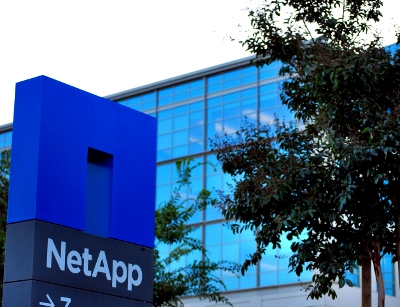NetApp’s storage-centric business model has exacerbated top- and bottom-line pressures for the company during the past three to four years, as the data center market moves toward more converged, scalable and virtualized functionality.
In response, NetApp has executed during 2016 on restructuring initiatives designed to preserve its bottom line and future stance in customers’ quickly evolving storage environments. These initiatives center on streamlining its workforce while increasing agility and enhancing execution in key technology markets such as flash and cloud-based storage through filling portfolio gaps and enabling its channel partners and direct sales force on modern NetApp solutions.
In addition to right-sizing its workforce, NetApp is putting executive leadership in place to more efficiently and effectively address customer demand for storage modernization, under its data fabric vision. Building from the foundation of its core ONTAP operating system, NetApp’s data fabric vision increasingly drives its portfolio development strategy, with a focus on streamlining and centralizing information storage and management in heterogeneous cloud environments, while accelerating storage performance.
As a result of its restructuring initiatives, NetApp reversed six consecutive quarters of year-to-year operating margin declines during C2Q16, and continued that trend during 3Q16, with operating margin rising 60 basis points from 3Q15 to 10.6 percent ($142 million). NetApp’s operating margin performance tells a positive story around its ability to invest strategically in its portfolio and go-to-market evolution – critical, as NetApp navigates hyperconvergence- and public cloud-driven disruption, as well as customers’ shift away from transactional purchase models in favor of more strategic, relationship-centric engagements with their IT vendors.
However, NetApp can cut costs only for so long, portending a greater reliance on monetization of its “Strategic,” future forward product segments such as its next-generation Clustered Data ONTAP platform for bottom line stability and investment leverage moving forward. TBR notes that product revenues from this category of $439 million rose approximately 10 percent quarter-to-quarter during 3Q16; however, on a year-to-year basis, growth slowed from nearly 24 percent during 2Q16, to a little more than 1 percent.
As mainstream, incumbent storage provider peers including Dell EMC and Hewlett Packard Enterprise (HPE) complete their stream of acquisitions and divestitures to transform their own businesses, and as niche peers including Nutanix put the pieces in place to execute for broader storage and data center market share, NetApp’s execution in this climate during the next six to 12 months will determine its future in customers’ next-generation data centers.
NetApp is armed with promising, key pieces of innovation, such as its newly acquired SolidFire scalable, software-defined flash storage, and key alliances, including with cloud service providers such as Amazon Web Services (AWS). However, TBR notes remaining portfolio gaps – notably around hyperconverged platforms – and an uphill battle to differentiating as a transformation advisor to customers in a noisy market crowded with peers such as Dell EMC, HPE and Lenovo.
NetApp augments its data fabric capabilities to support revenue as well as customer and partner loyalty amid the shift to hybrid cloud
Cloud market maturation is driving customer adoption of hybrid deployment models. Increasingly, enterprises are integrating legacy, on premises private cloud and “as-a-Service”-delivered resources to allow for the sharing of data across environments, with the goal of balancing security compliance, cost, flexibility and security requirements to improve business productivity and profitability.
To address this demand and withstand resulting changes to the competitive landscape, NetApp is enhancing its ability to connect and automate management of disparate on premises and “as-a-Service”-delivered data pools, and building out its ability to provide customers’ desired operational expense-based purchasing models.
Newly launched capabilities include the extension of NetApp’s ONTAP Cloud hybrid data management platform support to include Microsoft Azure public cloud services, the ability to purchase its Private Storage for Cloud hybrid solution “as-a-Service” through channel partners such as Faction, and the launch of its Cloud Sync Services SaaS offering that automatically and continuously moves and syncs data across on premises and public cloud services.
Increasing pressures from traditional competitors such as Dell EMC as well as newer ones such as Nutanix around cloud-oriented functionality are adding pressure to NetApp’s financials and partner loyalty. In this environment, we believe playing to its dedicated storage expertise in a way that eases key pain points for customers pertaining to integrating and optimizing hybrid environments, and addresses the ongoing influx of data-centric workloads into hybrid cloud environments, is NetApp’s key opportunity to differentiate.
However, NetApp’s stance as a storage-only vendor adds complexity in its ability to address customer demand for turnkey solutions to speed and simplify their migrations to net new architectures such as hybrid cloud. It also adds go-to-market steps compared to multiplatform peers such as Dell EMC and HPE in facilitating management competencies that span not only the data but also the compute and networking layers as well. As a result, evolving its partner-supported solutions portfolio development model, cultivated in large part through its FlexPod converged infrastructure initiative with Cisco, amid a climate of rising co-opetition will substantially influence the degree to which NetApp grows its hybrid cloud footprint.
Krista Macomber, senior analyst at TBR

